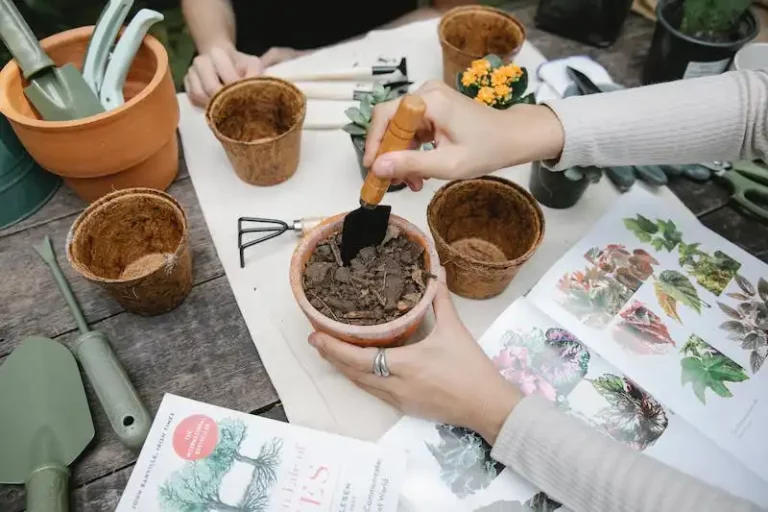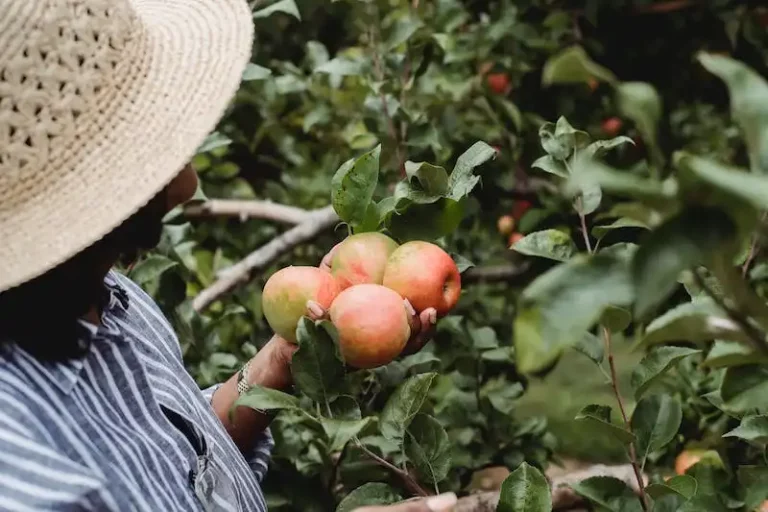When winter temperatures start to drop, it’s important to take steps to protect your outdoor plants. This practical guide will help you learn about different methods you can use to safeguard your beloved plants from the cold and frost. Whether you have delicate flowers, healthy shrubs, or vulnerable trees, there are several measures you can take to ensure their survival during the harsh winter months.
One of the most popular ways to provide protection for your plants is to build stakes around them. This not only offers support against heavy snowfall but also helps prevent plant heaving, which can occur when the soil freezes and thaws rapidly. Stakes can be made from temporary posts or even planter containers filled with soil. By using stakes, you can cover the base of your plants with a layer of straw or heavy mulch to insulate the roots and protect them from cold weather.
Another method that can be useful, especially for evergreen plants, is to cover them with plastic. By creating a temporary plastic enclosure around your plants, you can shield them from frost and wind. It’s important to ensure that the plastic cover is secure and that it allows airflow to prevent excessive moisture buildup and the growth of harmful pests. Remember to remove the plastic cover during the day to allow the plants to receive sunlight and fresh air.
In addition to physical protection, it’s crucial to take care of your plants’ water needs during winter. While plants may not need as much water as in the warmer months, they still require some moisture to stay healthy. Check the soil regularly and water when necessary, making sure to avoid overwatering. A good rule of thumb is to water your plants when the top 1 to 2 inches of soil are dry. This will help them withstand the dryness of winter without causing stress or root rot.
Understanding the specific needs of your plants and the limitations of your climate is key to effective winter protection. Some plants are more susceptible to cold temperatures than others, so it’s essential to research the ideal planting dates for your region. By planning ahead and taking the necessary precautions, you can ensure that your plants have the best chance of surviving the winter and thriving when spring arrives.
Q&A:
Q: When should I start protecting my outdoor plants in winter?
A: It’s best to start implementing protective measures before the first frost or when temperatures consistently drop below freezing. Early planning and preparation are crucial for the health and survival of your plants.
Q: What are some other practical ways to protect outdoor plants in winter?
A: Besides using stakes and covering plants with plastic, you can also create a layer of mulch around the base of the plants to provide insulation. Additionally, moving potted plants indoors or placing them in a sheltered area can offer extra protection against extreme cold.
Q: How can I protect bulb plants during winter?
A: Bulb plants, such as tulips and daffodils, are more sensitive to cold temperatures. To protect them, consider digging them up and storing them in a cool, dry place until spring. Alternatively, you can cover the soil with a layer of thick mulch or straw to provide insulation.
Winter Plant Protection
When the weather gets colder, it’s important to protect your outdoor plants from freezing temperatures. Whether you have potted plants or plants in the ground, there are several ways you can provide them with the protection they need.
- One of the easiest ways to protect your plants is by using coverings. This can be as simple as placing a cloth or plastic sheet over them overnight when temperatures drop. If you have smaller plants, you can also use a frame and cover it with a plastic sheet to create a temporary greenhouse.
- Using mulches is another effective method of protecting plants. Adding a layer of mulch around the base of your plants helps to insulate the soil and keep it warmer. This is especially helpful for plants that are more cold-sensitive.
- If you have potted plants, consider moving them inside for the winter. This is especially important for tropical plants that won’t survive the cold temperatures. Make sure to provide them with enough sunlight and water during this time.
- Another option is to build a cold frame to protect your plants. This is a permanent structure that can be used to cover your plants in the winter months. It’s like a small greenhouse that provides added protection from the cold.
- Before the first frost, make sure to water your plants well. Moist soil retains more heat than dry soil, so this can help prevent damage from freezing temperatures.
- For plants that can’t be moved or covered, consider using fences or other barriers to create a warmer microclimate. This can help to shield the plants from cold winds.
Remember, all plants have different temperature needs, so it’s important to check for specific information on the plants you are growing. Some plants, like annual flowers, may not be able to survive freezing temperatures at all, while others may just need a little extra protection.
By taking the necessary steps to protect your plants, you can ensure that they not only survive the winter, but also thrive when warmer weather returns.
What to Do before the Freeze
Before the winter freeze sets in, there are several practical steps you can take to protect your outdoor plants. These tips will help minimize stress on your beloved garden and ensure that your plants survive the harsh winter temperatures.
1. Assess the needs of your plants: First, assess which plants in your garden are tender and susceptible to freezing temperatures. Some annual plants may not survive the winter outdoors, so you may need to move them indoors or provide them with extra protection.
2. Use mulches: Adding a layer of mulch around the base of your plants can help insulate the soil and protect the roots from extreme temperature changes. Black mulches are particularly useful as they absorb and retain heat from the sun during the day.
3. Build windbreaks: Create a barrier around your garden to protect your plants from strong winds. This can be done by using fences, shrubs, or even a makeshift cage made from stakes and plastic sheeting. Windbreaks are especially helpful in areas with frequent strong winds.
4. Move potted plants indoors: If you have potted plants that are too sensitive to survive the winter outdoors, bring them indoors before the freeze. Find a suitable location with enough light and provide any necessary care instructions for them to thrive indoors.
5. Prune and protect: Before winter arrives, it’s a good idea to prune your plants to remove any dead or damaged branches. This will not only improve the appearance of your garden but also prevent diseases and pests from spreading. Additionally, consider covering your plants with burlap or floating row covers for added protection.
6. Learn from local gardeners: If you’re unsure about how to protect your plants in your specific climate, reach out to local gardening communities or visit your local garden center for advice. They can provide valuable tips and insights based on their experience in your area.
Remember, prevention is key when it comes to protecting your outdoor plants in the winter. By taking these steps before the freeze, you can ensure that your plants stay protected and thrive when spring comes around.
Winter Plant Protection Methods
When winter rolls around, it’s important to take steps to protect your outdoor plants from the cold weather. By following these methods, you can help ensure the health and survival of your plants throughout the winter season.
1. Know your zone: Before winter arrives, it’s essential to understand your plant hardiness zone. This information will help you determine which plants are better equipped to handle lower temperatures and which ones need extra protection.
2. Mulch around your plants: Adding a layer of mulch around the base of your plants can help insulate the roots and keep them warm. This is especially beneficial for plants with shallow root systems or those that are more sensitive to freezing temperatures.
3. Use protective coverings: In areas with harsh winter weather, it’s common to use protective coverings like burlap or frost blankets. These coverings provide a barrier against frost and cold winds, keeping the plants safe and warm.
4. Prune plants before winter: Pruning your plants before winter can help reduce stress on the branches and prevent damage caused by heavy snow or ice buildup. Make sure to remove any dead or diseased limbs, as they can pose a threat to the overall health of the plant.
5. Bring tender plants indoors: If you have tender plants that are not suited for cold temperatures, consider bringing them indoors for the winter. This will provide them with a safe and controlled environment, allowing them to thrive until the warmer weather returns.
6. Consider container gardening: If you have plants in containers, you have the option of bringing them inside during the winter. This way, you can control the temperature and ensure their survival without the need for additional protection.
7. Check soil moisture: Before winter sets in, make sure to check the moisture levels of the soil. If the ground is too wet, it can freeze and cause damage to the roots. On the other hand, if the soil is too dry, it can lead to dehydration and stress for the plants.
8. Keep an eye on predicted temps: Stay informed about the upcoming weather and pay attention to the predicted temperatures. If a significant drop is anticipated, take immediate action to protect your plants.
Remember, each plant has its own limitations, and what works for one might not work for another. It’s essential to research the specific needs of your plants and adjust your winter protection methods accordingly. By taking proactive measures to protect your plants, you can ensure a healthy and thriving garden come springtime.

